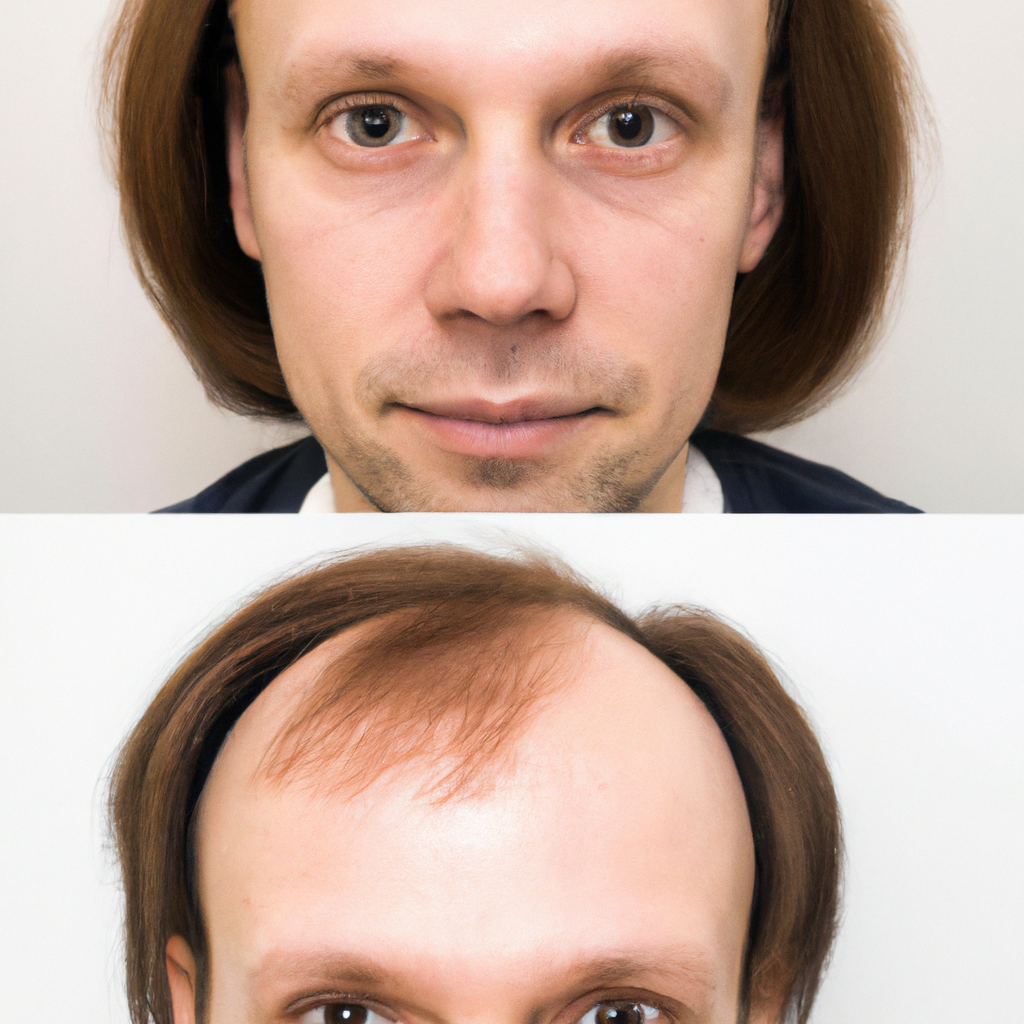
29 Jun Hair Transplant Before and After: Transforming Lives and Restoring Confidence
air loss is a common concern that affects millions of people worldwide. It can occur due to various reasons such as genetics, hormonal imbalances, medical conditions, or lifestyle factors. While there are several treatment options available, hair transplant surgery has emerged as a highly effective and popular solution for restoring natural hair growth.
What is Hair Transplantation?
Hair transplantation is a surgical procedure that involves the extraction of hair follicles from a donor area, typically the back or sides of the scalp, and their transplantation to areas experiencing hair loss or thinning. The transplanted hair follicles are carefully placed in the recipient sites to achieve a natural and aesthetically pleasing hairline.
Understanding Hair Loss
Before delving into the details of hair transplant procedures, it is crucial to understand the causes of hair loss. Hair loss can occur due to genetic factors, hormonal imbalances, medical conditions, and lifestyle factors. By identifying the underlying cause, medical professionals can determine the most suitable treatment approach.
Causes of Hair Loss
Genetic Factors
Genetics play a significant role in hair loss. Male and female pattern baldness, also known as androgenetic alopecia, is a hereditary condition that leads to gradual hair thinning and eventual hair loss.
Hormonal Imbalances
Hormonal imbalances, such as changes in testosterone levels, can trigger hair loss. Conditions like polycystic ovary syndrome (PCOS) and thyroid disorders can contribute to hormonal imbalances and subsequent hair thinning.
Medical Conditions
Certain medical conditions, like alopecia areata and telogen effluvium, can cause temporary or permanent hair loss. Autoimmune diseases and scalp infections are other examples of medical conditions that may lead to hair loss.
Lifestyle Factors
Unhealthy lifestyle habits, including poor nutrition, excessive stress, smoking, and improper hair care, can contribute to hair loss. These factors can weaken hair follicles and hinder healthy hair growth.
The Hair Transplant Procedure
A successful hair transplant procedure involves several crucial steps. Understanding the process can help individuals make informed decisions and prepare for the transformation ahead.
Consultation and Assessment
Before undergoing a hair transplant, it is essential to have a consultation with a qualified hair transplant specialist. During this phase, the specialist evaluates the individual’s hair loss pattern, examines the donor area, discusses expectations, and recommends the most suitable approach.
Donor Area Harvesting
The donor area, usually the back or sides of the scalp, is the region with healthy hair follicles. In the hair transplant procedure, hair follicles are harvested from this area through two primary methods: Follicular Unit Transplantation (FUT) and Follicular Unit Extraction (FUE).
Graft Preparation
Once the donor hair follicles are harvested, they undergo meticulous preparation. Skilled technicians dissect the harvested grafts under a microscope, ensuring the separation of individual follicular units to optimize graft survival and transplantation success.
Recipient Site Creation
The recipient sites are small incisions made in the areas where hair transplantation is desired. These sites are strategically planned to achieve a natural-looking hairline and proper hair density. The expertise of the surgeon is crucial in creating the recipient sites.
Graft Placement
During this phase, the prepared grafts are carefully placed into the recipient sites. The surgeon pays attention to the angle, direction, and density of hair placement to ensure a seamless blend with the existing hair and a natural appearance.
Preparing for a Hair Transplant
Undergoing a hair transplant requires adequate preparation to ensure a successful procedure and optimal results.
Medical Evaluation
Before the surgery, individuals undergo a thorough medical evaluation to assess their overall health and determine their suitability for the procedure. This evaluation includes a review of medical history, physical examination, and sometimes additional tests.
Medication Adjustments
Certain medications, such as blood thinners and some herbal supplements, may interfere with the hair transplant procedure. The medical team may advise temporary adjustments or discontinuation of specific medications to minimize the risk of complications.
Lifestyle Changes
To enhance the success of the hair transplant, individuals may need to make temporary lifestyle changes. These changes may include avoiding alcohol and smoking, improving nutrition, and reducing stress levels.
The Importance of Before and After Photos
Before and after photos of hair transplant patients are valuable resources for individuals considering the procedure. These photos provide visual evidence of the transformation achieved through hair transplantation and help set realistic expectations.
Hair Transplant Before and After: The Transformation
The results of a hair transplant can be life-changing, providing individuals with a renewed sense of confidence and self-esteem. The transformation involves various aspects, each contributing to the overall positive impact.
Improved Hairline and Hair Density
One of the primary goals of a hair transplant is to restore a natural-looking hairline and increase hair density in areas affected by hair loss. The transplanted hair blends seamlessly with existing hair, giving a fuller and more youthful appearance.
Boosted Self-Esteem and Confidence
Experiencing hair loss can significantly impact a person’s self-esteem. By restoring a full head of hair, a hair transplant can boost self-confidence, allowing individuals to feel more comfortable and at ease in social and professional settings.
Enhanced Overall Appearance
A head of healthy and voluminous hair can significantly enhance an individual’s overall appearance. With the restoration of natural hair growth, individuals often experience a more youthful and attractive aesthetic, positively affecting their perception by others.
Real-Life Stories of Hair Transplant Success
Real-life stories and testimonials from individuals who have undergone hair transplant procedures can provide further inspiration and reassurance. These stories highlight the positive impact hair transplantation can have on self-image, personal relationships, and professional opportunities.
Post-Transplant Care and Recovery
After a hair transplant, proper post-operative care and recovery are crucial for optimal results and a smooth healing process.
Medications and Topical Treatments
Following a hair transplant, individuals are often prescribed medications and topical treatments to promote healing, prevent infection, and enhance hair growth. These may include pain medications, antibiotics, and specialized hair care products.
Follow-up Visits
Regular follow-up visits with the hair transplant specialist are essential to monitor progress, address any concerns, and ensure proper healing. These visits allow the medical team to assess the success of the procedure and provide additional guidance if needed.
Lifestyle Recommendations
To maintain the longevity of the hair transplant results, individuals are typically advised to follow specific lifestyle recommendations. These may include protecting the scalp from excessive sun exposure, avoiding strenuous physical activities, and practicing proper hair care.
Potential Risks and Complications
As with any surgical procedure, hair transplant surgery carries certain risks and potential complications. It is essential for individuals to be aware of these risks and have realistic expectations regarding the outcomes.
Infection
Although rare, infections can occur after a hair transplant procedure. It is crucial to follow proper post-operative care instructions and maintain good hygiene to minimize the risk of infection.
Bleeding
Some bleeding may occur during and after the hair transplant surgery. However, the medical team takes necessary precautions to minimize bleeding and provide appropriate post-operative instructions to manage any potential bleeding.
Scarring
Hair transplant procedures involve small incisions, which can lead to minimal scarring. However, skilled surgeons employ advanced techniques to minimize scarring and ensure natural-looking results.
Choosing a Qualified Hair Transplant Specialist
Selecting a qualified and experienced hair transplant specialist is crucial for a successful procedure and satisfactory results. Consider the following factors when choosing a specialist:
Experience and Credentials
Look for a specialist with extensive experience in performing hair transplant surgeries. Check their credentials, certifications, and professional affiliations to ensure their expertise in the field.
Patient Testimonials
Reading testimonials and reviews from previous patients can provide valuable insights into the specialist’s skills, patient satisfaction, and overall reputation. Positive testimonials can instill confidence in the specialist’s abilities.
Facility and Technology
Ensure that the hair transplant facility is well-equipped with modern technology and adheres to strict hygiene and safety standards. Advanced technology can contribute to better results and a smoother surgical experience.
Conclusion
Hair transplant procedures have revolutionized the lives of individuals dealing with hair loss, providing them with the opportunity to regain their confidence and restore their hair to its natural glory. With advancements in technology and skilled professionals, hair transplant surgery offers a viable and effective solution for those seeking a transformation in their appearance and self-esteem.

Sorry, the comment form is closed at this time.